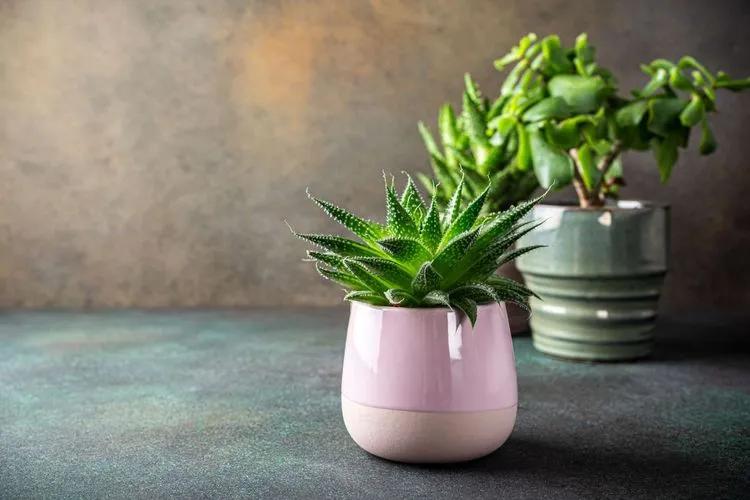 Most of the indoor plants may react oddly to harsh climate changes. They suffer from excessive heat, cold, fans, drafts, improper humidity lever or even TVs and computers. Also, if you have the air conditioning system at home, consider how it can affect the development and growth of your houseplants.
Most of the indoor plants may react oddly to harsh climate changes. They suffer from excessive heat, cold, fans, drafts, improper humidity lever or even TVs and computers. Also, if you have the air conditioning system at home, consider how it can affect the development and growth of your houseplants.
Take plants away from air vents
Vents and fans are the worst enemies of houseplants. Cold air from vents can bring comfort for you, but it is indeed harmful for your plants. Cold temperatures freeze the plant cells, blocking the natural pathways for water and nutrients. Basically, low temperatures cause plants starving. If your plant's leaves fade or wilt, it can happen because your plant stands next to the air vent. Cold air blowing directly on plants often robs them of moisture. After buying a green pet, carefully check all the possible locations for it. Try to move it to a room that either has no air conditioner or is far from the air vent.
Spray sensitive plants daily
 Many plants, especially those with thinner leaves, are sensitive to low humidity.
If you have a flowering plant and you notice that the buds are falling off the plant or their leaves are withering, this may be due to low humidity. Gentle misting of houseplants offers a bevy of benefits that will help them thrive and bloom. Note: plants don’t like to go to bed with wet feet:) We recommend you adding regular misting to your morning plant care routine. Not all houseplants require that, obviously: succulents, fiddle leaf figs or spider plants enjoy dry, low-humid air. Use a simple plastic spray bottle as it is the easiest solution for proper misting of houseplants. You can also use Miracle-Gro Leaf Shine: it is a water-based solution which also contains mineral oil and can be applied to leaves when they look dull.
Tip: if you are going to spray the plants, turn off the air conditioner to avoid stains on the foliage. Turn it on after there are no drops of water on the foliage.
Many plants, especially those with thinner leaves, are sensitive to low humidity.
If you have a flowering plant and you notice that the buds are falling off the plant or their leaves are withering, this may be due to low humidity. Gentle misting of houseplants offers a bevy of benefits that will help them thrive and bloom. Note: plants don’t like to go to bed with wet feet:) We recommend you adding regular misting to your morning plant care routine. Not all houseplants require that, obviously: succulents, fiddle leaf figs or spider plants enjoy dry, low-humid air. Use a simple plastic spray bottle as it is the easiest solution for proper misting of houseplants. You can also use Miracle-Gro Leaf Shine: it is a water-based solution which also contains mineral oil and can be applied to leaves when they look dull.
Tip: if you are going to spray the plants, turn off the air conditioner to avoid stains on the foliage. Turn it on after there are no drops of water on the foliage.
Check the humidity level
Most of the indoor plants originate from humid jungle environments - air moisture is critical for them. In general, such plants tolerate 40-60% humidity level (it is much higher than most of our homes maintain). In winter, the humidity level must be increased even more for your houseplants to thrive. We recommend placing several plants in a group, thus creating a ‘pocket of humidity’. You can also put a dish of water in the center to create a humid microclimate. Another option is to use pebble trays - play a layer in the tray and water until the pebbles are not quite covered; then, set the plants on top. This will help to hold the plant above the water and keep the roots not constantly wet. Water evaporation increases the air around the plant. Be careful: too high humidity levels can cause mold growth or damage your home furniture. If you notice your houseplant leaves turning red or brown, it is a signal of the excessive humidity level. You can also buy a humidifier that will help you to create the ideal climate in your home. Check for Honeywell, TaoTronics Cool, Vicks Warm, Pure Guardian models.
Protect small plants with glass
Small plants are usually very sensitive to cold air, temperature changes, and low humidity. We advise protecting small plants with glass to keep them safe. Although it might be an old-fashioned method, it helps to create a micro climate. If the weather gets warmer than expected, condensation and rain occur - those are funny to enjoy (be careful to thus remove the jar not to cook the plant). Glass jars are thicker than plastic or frost blankets, that’s why they provide more protection.
Understand the needs of your plants
Be sure to research the temperature and humidity needs of your plants. Different species deal with the effects of air conditioning in different ways. Once you understand the conditions in which your plants have to grow, you can make decisions about where to place them and how to care for them. If you want your plants to stay indoors, choose the species with large and wide leaves. They often tolerate temperature changes and dry air better than smaller plants with thin leaves.
closing
Remember: the temperature is not always critical, it is all about the humidity level. Not only does it affect plants, it also drains the soil. Creating microclimate at home is not a challenging task - it only requires your genuine desire and time.
